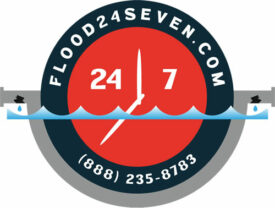Introduction to flood restoration in Queens
Flood restoration in Queens refers to the process of cleaning up and repairing damage caused by floods in the Queens area. When a flood occurs, the first step is to remove the water from the affected area. After that, the cleanup process involves drying out the space, removing any damaged materials, and disinfecting the area to prevent mold and bacteria growth. The restoration process may also involve repairing structural damage and restoring any affected belongings. It’s important to act quickly to minimize the damage and restore the affected area as soon as possible.
Initial assessment and damage evaluation
The flood restoration process starts with an initial assessment and damage evaluation. Professionals will inspect the affected areas to determine the extent of the damage caused by the flood. They will assess the water damage, structural issues, and potential health hazards present. This evaluation is crucial for creating a comprehensive plan for the restoration process and ensuring that all necessary steps are taken to address the damage effectively.
Water extraction and drying process
The water extraction process involves removing standing water from the affected area using specialized equipment. Once the water is extracted, the drying process begins using dehumidifiers and air movers to eliminate moisture from the environment to prevent mold growth and further damage. The duration of the process can vary depending on the extent of the water damage and the size of the affected area.
Mold remediation and sanitation
Mold remediation involves the thorough cleaning and removal of mold from surfaces in a building, as well as the prevention of future mold growth. The process includes identifying the source of the mold, containing the affected areas, removing the mold, and cleaning and sanitizing the affected surfaces. Sanitation is crucial to ensure that the area is free from mold spores and any potential health hazards. It’s important to hire a professional restoration company that specializes in mold remediation to ensure that the process is carried out effectively and safely.
Structural repairs and restoration
A flood restoration process typically involves structural repairs and restoration to ensure the safety and stability of the building. This can include repairing damaged walls, floors, ceilings, and other structural components. Restoration may also involve addressing any mold or mildew issues that have developed as a result of the flood. It is important to work with experienced professionals to complete these tasks effectively and efficiently.
Contents cleaning and restoration
During the flood restoration process in Queens, contents cleaning and restoration are crucial steps to salvage your belongings. Here’s what to expect:
- Damaged items such as furniture, clothing, and personal belongings will be assessed for restoration or disposal.
- Through specialized cleaning techniques and equipment, professionals will work to restore salvageable items to their pre-flood condition.
- Contents restoration may involve cleaning, deodorizing, and repairing items to remove water or mold damage.
- Professional restorers will prioritize salvaging your belongings and ensuring minimal disruption to your daily life.
Insurance and documentation process
Insurance companies typically cover flood damage, but it’s important to have proper documentation. Take photographs and make a list of damaged items for the insurance claim. Include any receipts or contracts related to those items to support your claim. Keep in mind that the insurance process might vary depending on your policy and the specific circumstances of the damage.
Enhancing flood resilience: tips and recommendations
To enhance flood resilience, consider the following tips and recommendations:
- Elevate electrical outlets, switches, sockets, and wiring at least 12 inches above the expected flood level to prevent water damage and electrical hazards.
- Install backflow valves in your sewer lines to prevent sewage from backing up into your home during a flood.
- Consider retrofitting your home with flood-resistant materials and building techniques, such as using flood barriers and waterproof sealants.
- Create a family emergency plan and assemble an emergency kit, including important documents, medicine, and essential supplies.
DIY vs professional restoration: pros and cons
If you choose to do the flood restoration yourself, you can save money, but it can be a time-consuming and labor-intensive process. You will need to research and purchase all the necessary equipment and supplies, and there is a risk of not addressing all the damage effectively. Additionally, improper restoration can lead to mold growth and other long-term issues.
On the other hand, hiring a professional restoration service ensures that the job is done thoroughly and efficiently. Professionals have the expertise, equipment, and resources to handle the restoration process effectively. However, this option is more expensive than doing it yourself. It’s crucial to weigh the cost against the time, effort, and potential risks involved in DIY restoration.
Conclusion and final thoughts
Conclusion and final thoughts: The flood restoration process in Queens can be stressful and overwhelming, but with the right knowledge and preparation, you can navigate through it more smoothly. Remember to prioritize your safety and the safety of others during the restoration process. Always consult with professional restoration services for an accurate assessment of the damage and a comprehensive plan for restoration. Keep in mind that the timeline for the flood restoration process can vary based on the extent of the damage and the availability of resources. Remain patient and stay informed throughout the restoration process to ensure a successful outcome.


